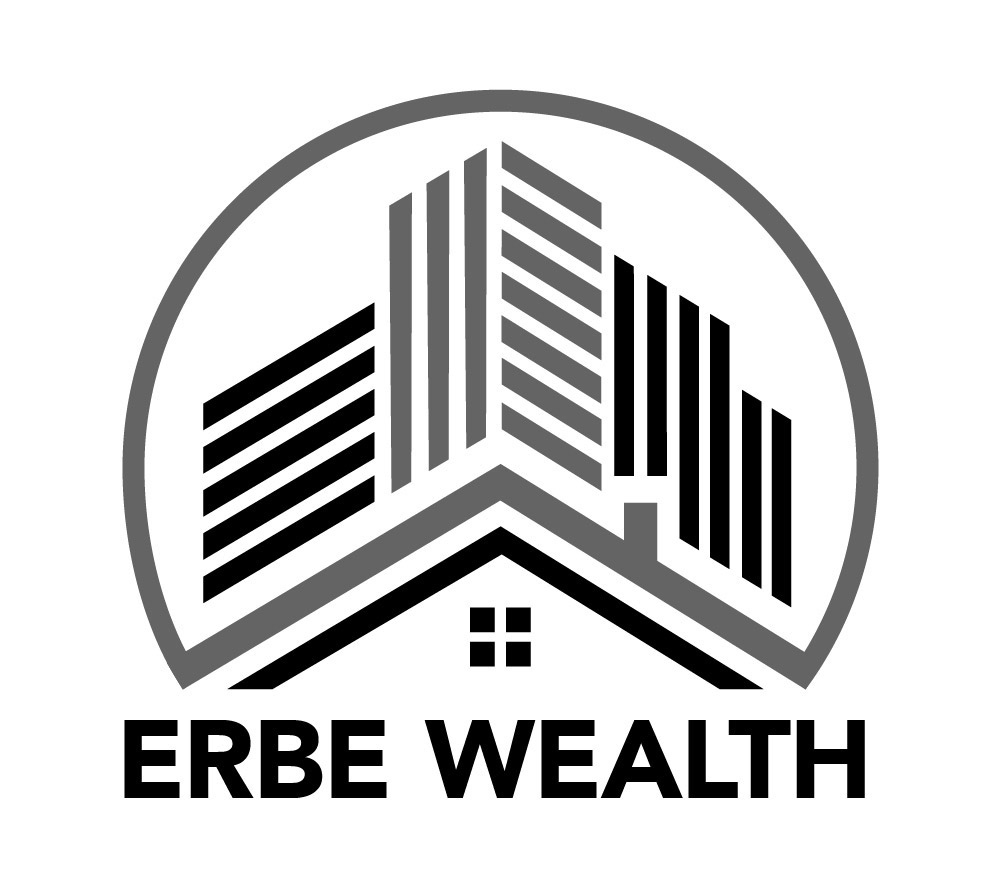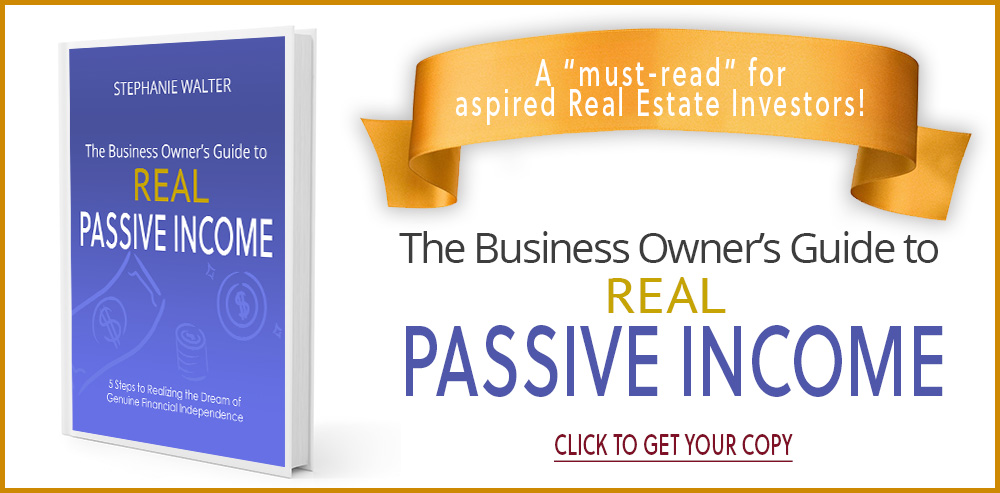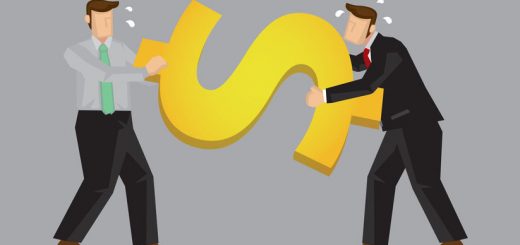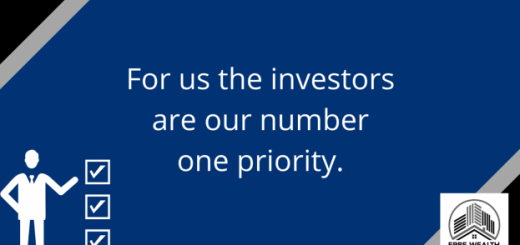Self-Directed IRA
by Erbe Wealth · Published · Updated
Most investors are aware of the opportunity to invest in stocks, bonds, and mutual funds with an IRA. However, many are unaware that IRA funds can also be invested in alternative assets like syndications. Real estate and real estate syndication are the most common alternative asset purchase, with some of the wealthiest individuals making it a major part of their investment strategy. Using IRA funds to make these investments becomes a natural transition for many experienced real estate investors.
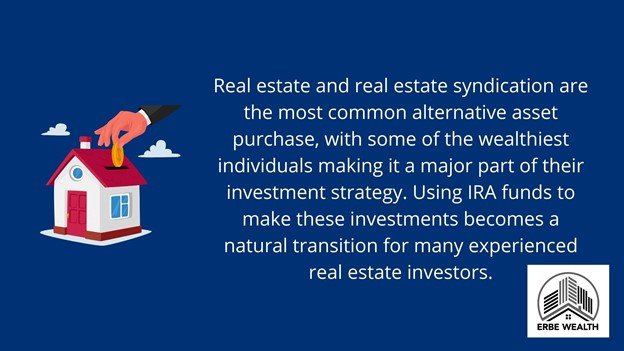
So, what is a self-directed IRA?
A self-directed IRA (SDIRA) is a type of individual retirement account IRA that can hold investments that a typical IRA cannot, such as precious metals, commodities, and real estate. Self-directed IRAs have the same contribution limits as traditional and Roth IRAs. That limit is $6000 per year or $7000 per year for those 50 or older.
How does this self-directed IRA work?
The self-directed IRA follows the same template as a standard IRA in many ways. The contribution limits are the same as I just went over. You can choose to open an SDIRA as a traditional IRA or a Roth IRA with the same pre-tax and post-tax contribution rules. What’s different is that the custodian of an SDIRA allows you to buy various alternative investments.
The custodian of your regular IRA, usually a bank or a brokerage firm, limits your investment options to improve securities like stocks, bonds, exchange-traded funds, EFTs, and mutual funds. That really limits what you can invest in. It is limiting if you’re only investing in those things because those are largely very market-driven investments. Many investors like to invest in something not tied to the market, like commercial real estate.
Different custodians offer self-directed IRAs where you can invest your funds in buying gold bars, silver, or even cryptocurrency. A lot of investors want the tax advantages of an IRA for investments in nontraditional asset classes for purposes of diversification or, more importantly, potentially better returns. It’s crucial to note that you typically cannot buy these nontraditional assets directly from an SDIRA custodian.
The custodian holds the rollover funds in your account. You, as the investor, need to go out and find the syndicator, do your due diligence, and find the deal you want to invest in. You let the custodian where to send the funds and the custodian distributes the money into the deal.
What assets can you own in a self-directed IRA?
You can own the following nontraditional assets: cryptocurrency, real estate properties, and syndications (a type of real estate), startup’s tax liens, and foreign currency.
You cannot currently invest in life insurance or collectibles like artwork, antiques, or precious metals that don’t meet the IRS purity standards.
Why would an investor consider doing this?
I talked to many investors who have an old employer IRA account. Maybe they’ve quit their job in the past, so that old IRA or 401k is just sitting there, not doing anything significant. You may not even have any idea of what it’s invested in. Most likely, it is invested in mutual funds which are tied to the market. The investor is unaware of the fees they are being charged to maintain that account every year.
Many people who become familiar with syndications remember that they have that old 401K, and once they hear it is an option, they like to roll that money over into a self-directed IRA.
What are the Benefits of Using a Self-Directed IRA to Invest in a Real Estate Syndication?
Number one: Diversification.
Whether it’s an alternative or standard market product, each asset reacts differently to the same event. Investing in a variety of assets can minimize the risks of your portfolio.

Number two: Tangible Assets
Real estate syndication is a tangible asset. Unlike the volatile stock market that fluctuates quite often, real estate, at minimum, usually retains its value. Even if the real estate market value decreases, you will still have the physical property that continues to generate cash flow.
Number three: Deferred Taxes.
As with any traditional IRA investment, the profit generated has the potential to grow tax-deferred until you make a withdrawal. If it is a Roth IRA, profits could accumulate entirely tax-free, meaning you wouldn’t even have to pay taxes when you withdraw funds.
The most important benefit that I see with my investors is they get to invest more in what they love. A self-directed IRA helps you invest in alternative assets that you understand and fit well with your personal financial goals.
How does the Self-Directed IRA process work?
If you open an account with a self-directed IRA custodian, be sure to read up on reviews. I work with a lot of SDIRA people and have a good list of custodians I can provide on request.
However, I would encourage you to read up on the reviews of those custodians to be sure that you’re getting the best possible customer service price and overall investing experience.
Next step, you fund your SDIRA by rolling over your old 401k or IRA to the selected custodian. From there, you just instruct the SDIRA custodian to invest your funds in your chosen and vetted syndication opportunity.
How does the Investment Proceed After That?
All cash flows, such as net proceeds, are paid to the SDIRA custodian. The profits of the monthly distributions and the gains of sale are not taxed, and you can use the funds to invest again and again in different syndicated opportunities.
The main point is using an SDIRA is a great tool to have in your toolbox that allows you to use retirement funds to diversify from the market and invest in real estate. You can have some protection against economic fluctuations with all the tax advantages of an advantaged retirement account.
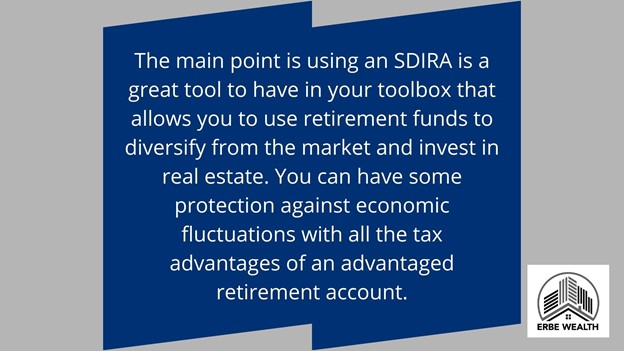
Using your self-directed IRA funds and any personal investments made into a syndication can open the door to more opportunities for long-term growth. Once my investors start working with a syndicated team, see their returns, and become familiar with this process, they couldn’t be happier. In my past opportunities, I presented 20%+ annualized returns to my investors. It really insulates people against the market volatility that all prominent economists say is coming.
